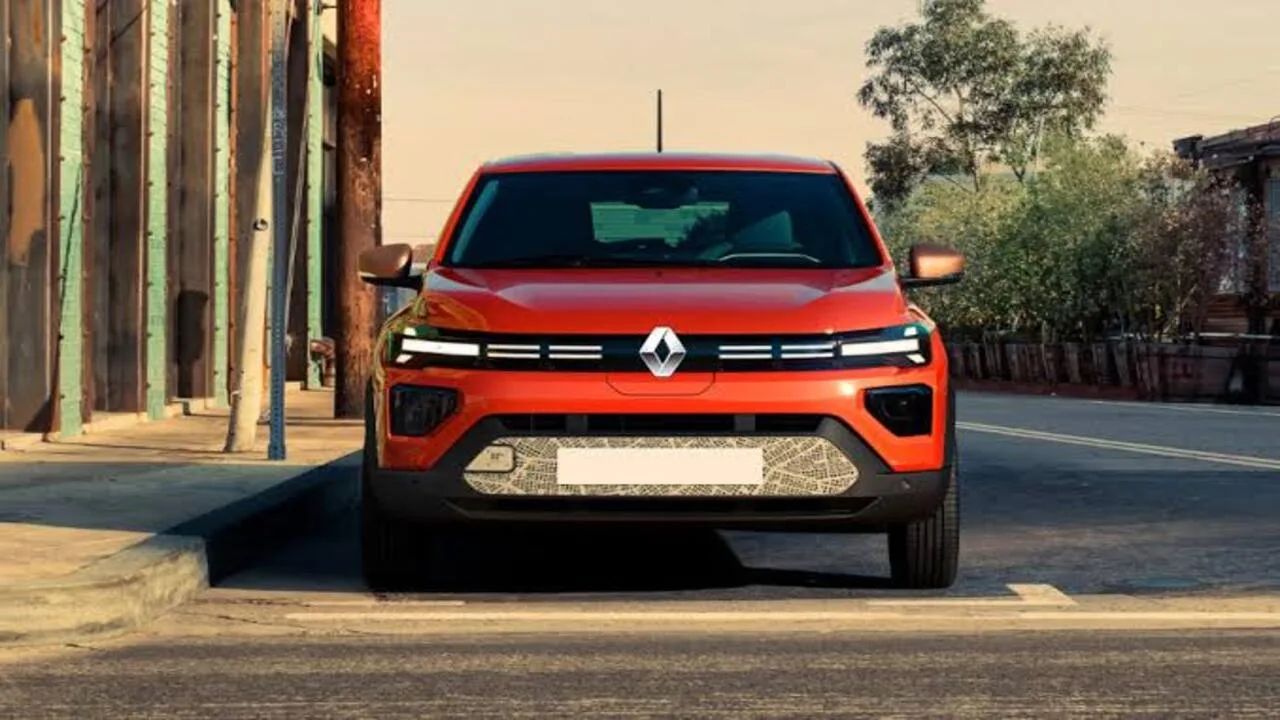Renault Kwid plans to enter the Indian electric vehicle market with its new Kwid EV. This new EV is ready to challenge powerful vehicles like Tata Punch EV. Citroen EC3 and MG Comet. So let’s know complete information about its design, features, performance and price.
Design and styling of Renault Kwid EV
Talking about its design, the Renault Kwid EV has a traditional design which makes it different from other EVs. Its front has LED DRLs, which resemble the new generation Duster.
The charging port is below the DC logo at the front. Other highlights include split headlamp setup, closed-off grille, single wiper and rugged bumper design. The side profile has square off wheel arches, door side trims and conventional door handles.

Features of Renault Kwid EV
Talking about the features of Renault Kwid EV, steel wheels are seen in this test mule while the top-spec variants may have alloy wheels with aerodynamic design. At the rear, the Kwid EV has a rear wiper, integrated spoiler, shark fin antenna and edged tail lamps. The overseas model of the Dacia Spring EV is 3,701 mm long and has a boot space of 308 liters. The dimensions of the upcoming Renault Kwid EV will also be almost similar.
Interiors of Renault Kwid EV
The interiors of the Renault Kwid EV will have a 10-inch touchscreen infotainment system and a 7-inch instrument cluster. Other highlights include a minimalistic center console, three-spoke multifunction steering wheel, circular AC vents and stubby gear lever. The contrasting white highlights with the dual-tone interior theme give it an exciting cockpit.
Safety features of Renault Kwid EV
Talking about the safety features of Renault Kwid EV, its safety kit includes electronic stability control, hill start assist, front and rear parking sensors, driver attention alert, rear parking camera and tire pressure monitoring system. ADAS features like lane keeping assist. traffic sign recognition and emergency braking system are also available.
Range of Renault Kwid EV
These EVs are available in two variants in international markets. The top-spec variant has a 26.8 kWh battery pack that generates 65 hp and 113 Nm of torque. Its range is 225 km and 0 to 100 km / h speed can be achieved in 13.7 seconds.
The top speed is 125 km / h. Its battery can be charged using a 7kW standard AC charger or a 30 kW DC rapid charger. The Dacia Spring EV can be charged from 20% to 80% in just 40 minutes using a 150-kW fast charger at public charging stations.

